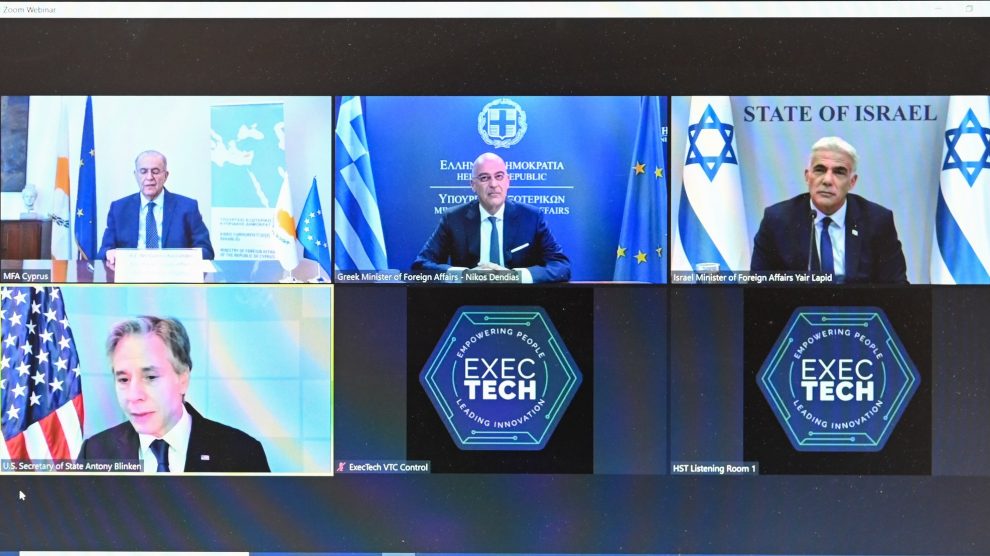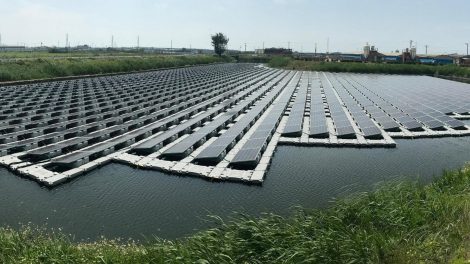EastMed is back. The foreign ministers of Cyprus, Greece, Israel and the US convened virtually to discuss energy. And the proposed pipeline – which was put on hold in 2018 – was the discussion’s centrepiece.
- Cyprus, Greece and Israel – the countries with jurisdiction over the project, with Italy on the sidelines – have been hoping for a renewed interest on behalf of the American partners.
- US Secretary of State Antony Blinken confirmed that during his talk on Monday with the foreign ministers of Cyprus (Ioannis Kasoulides), Greece (Nikos Dendias) and Israel (Yair Lapid). They met in the so-called 3+1 format.
A Kremlin-inspired action. Vladimir Putin’s war against Ukraine has prompted the West to diversify its energy supply sources to reduce dependency on Russia. And the proposed 1,900 km pipeline would connect the gas-rich Levantine basin in the Eastern Mediterranean to mainland Europe via Greece and Italy.
- The United States lost interest in the project in 2018, citing doubts about its economic viability.
- That decision was appreciated by Turkish President Recep Tayyip Erdogan, as the NATO country also lays claim to the Levantine basin.
- Recently, however, Washington had signalled openness on EastMed, with the Russian invasion being a determining factor in this change of heart.
- “It’s not just about the green transition; it’s also about the transition away from Russia,” said Andrew Light, Assistant Secretary of State for International Affairs and the Environment, in late March.
A decisive step up. Replacing the 150 billion cubic metres that Russia delivered to the EU won’t be easy, but the EastMed project can definitely help.
- Nicola Monti, CEO of Edison (the energy company supplying 20% of Italy’s gas needs), said that gas transportation through the EastMed pipeline could be feasible in as little as four years.
- Italy alone would be supplied with an extra ten bcm per year, with that amount potentially doubling in a later phase, according to Mr Monti. For reference, Russian gas supplies to Italy amounted to roughly 29 bcm a year.
The next steps. Washington looks set to devote itself to the project in the near future, and Brussels is moving along the same lines: the final green light could arrive as soon as the year’s end.
- On Monday, US Spokesperson Ned Price stated that the ministers had agreed to develop a roadmap capable of yielding deliverables as early as 2023. That roadmap would then “set the stage for a follow-on meeting before the end of 2022.”
- The European Commission is carrying out its own feasibility study, as recalled by Greek Prime Minister Kyriakos Mitsotakis in a recent interview with To Vima and his Italian counterpart, Mario Draghi.
Image: Twitter (@NikosDendias)





